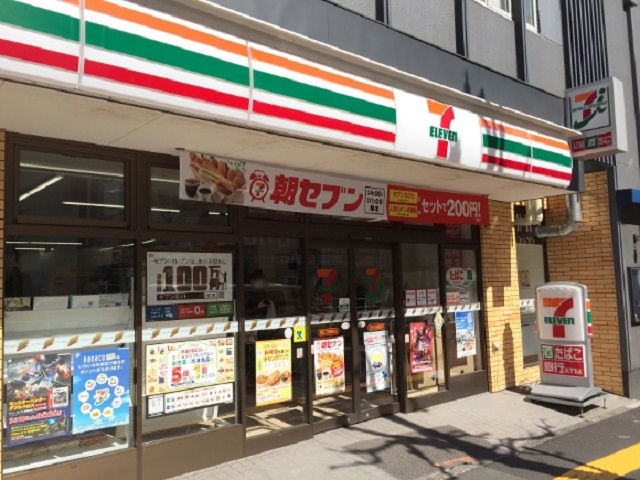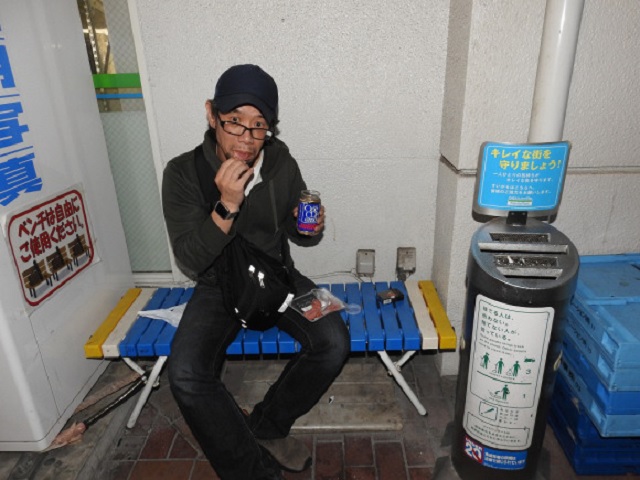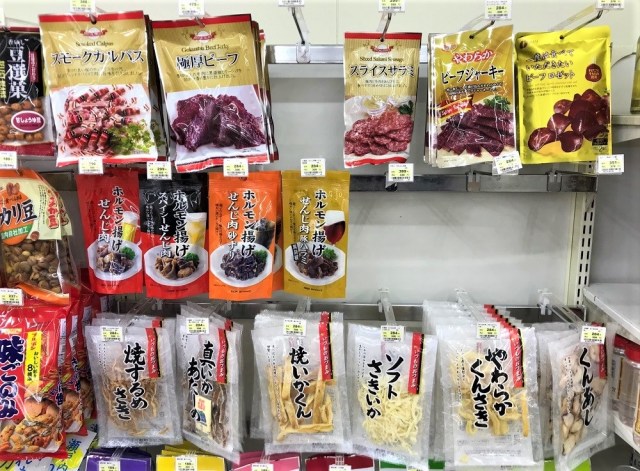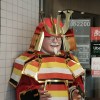
Do the magazine rack, trash cans, and restroom rules act as a preemptive crime report?
By most measures, Japan is a country with very little crime. That said, some neighborhoods are still safer than others, and that’s a major criteria for many people when looking for an apartment.
Unfortunately, it’s not always easy to tell how safe a community is until you’ve already been living in it for a while, at which point simply pulling up and moving to somewhere else might not be feasible. However, recently Japanese Twitter users have been discussing what some say is a way to quickly get a feel for the safety level of a neighborhood: taking a quick look around its convenience stores.
実は私、上京してから引越し7回も経験しているので"治安を見極めるプロ"なのですが…近くのコンビニを数軒回り『ワンカップ大関、週刊誌などオッサン向け雑誌が充実しまくってる、逆にファッション誌が少ない、トイレ貸し出し不可』が揃うとかなり治安が悪くなるので、コンビニチェックは必須ですッ。
— 定時ダッシュちゃん(マッチングアプリ婚) (@teiji_oriental) September 7, 2020
The ball got rolling when Japanese Twitter user @teiji_oriental offered some tips on what to look for, asserting that a neighborhood is dangerous if its convenience stores are well-stocked with One Cup Ozeki (a very low-price brand of sake), plus tabloids and other magazines aimed at middle-aged men. Other red flags: a poor selection of fashion magazines and not allowing customers to use the store’s bathroom. On the other hand, a good selection of organic foods and high-priced mineral waters correlate to a safer neighborhood.
▼ Pictured: A middle-aged man drinking One Cup Ozeki
Other commenters added tip-offs of their own. Trash cans available outside the store were seen as signs of a safe neighborhood, with the receptacles being inside indicating the opposite. For bathrooms, many mentioned a sliding scale where free use by customers was indicative of the safest neighborhoods, having to ask the staff first meant moderate safety, and no customer bathroom whatsoever was the worst. Signs posted inside the store bearing messages like “Shoplifting is a crime” or “Thank you for using the bathroom without leaving a mess” were also associated with unsafe neighborhoods (the latter perhaps because not leaving the bathroom a mess should go without saying). Finally, the section for liquor and drinking snacks being right where customers enter the store was also pointed to as worrisome.
▼ The drinking snack section of Japanese convenience stores is where you’ll find mixed nuts, beef jerky, and dried squid.
The overall theme was that neighborhoods with comparatively more men, less income, or a stronger thirst for booze are more dangerous. However, not everyone agreed with this logic, with multiple commenters claiming to be current or former convenience store workers disputing the accuracy of these litmus tests. “I’ve worked in four different convenience stores, and none of this is true,” said one. “The product selection has nothing to do with how safe the neighborhood is.”
Where the trash cans are located is often a factor of how much pedestrian traffic the area has, mentioned another. The bins are supposed to be for customers of the store only, and a large number of people passing by increases the chance that non-customers might drop their trash into them, filling them up and inconveniencing people actually shopping at the store. Policies on customer toilet use aren’t necessarily for crime prevention, either. If a convenience store is located in a neighborhood with many pubs or restaurants, many passersby may be feeling the call of nature on their after-dinner walk home, and the store simply might not want a line of people standing around waiting to use the john, or have enough staff to keep up with the increased cleaning schedule that would go along with that much use. One current convenience store owner pointed out, not all convenience stores are built with a layout that allows direct access to the bathroom, and only have a small employee restroom at the back of the office.
One could still make the counter-argument, though, that with alcohol being a common factor in street crime, and with more male perpetrators than female ones, that a convenience store stocking products that appeal to men who like to drink means that there are more such men in the area, and thus the greater potential for crime…all else equal. That’s just one possible factor, though, so perhaps the best thing to do before signing a lease is to spend some time exploring various parts of the neighborhood, not just the convenience stores, at various times of day to help you judge whether you feel comfortable enough to start calling it your home.
Reference: Twitter/@teiji_oriental via Hachima Kiko
Photos ©SoraNews24
● Want to hear about SoraNews24’s latest articles as soon as they’re published? Follow us on Facebook and Twitter!



 10 factors that make Japan a safe country
10 factors that make Japan a safe country Teacher in Japan politely asks to use convenience store bathroom to jerk off, gets arrested
Teacher in Japan politely asks to use convenience store bathroom to jerk off, gets arrested Six ways to avoid looking like an “idiot” when shopping at Japanese convenience stores
Six ways to avoid looking like an “idiot” when shopping at Japanese convenience stores Ban on free plastic forks and spoons drafted by Japan’s Ministry of Environment
Ban on free plastic forks and spoons drafted by Japan’s Ministry of Environment Jack-‘o-lantern trash bags being handed out to fight litter during Tokyo Halloween parties
Jack-‘o-lantern trash bags being handed out to fight litter during Tokyo Halloween parties Studio Ghibli unveils new goods that tip the hat to The Cat Returns
Studio Ghibli unveils new goods that tip the hat to The Cat Returns Bad tourist manners at Mt Fuji Lawson photo spot prompts Japanese town to block view with screens
Bad tourist manners at Mt Fuji Lawson photo spot prompts Japanese town to block view with screens McDonald’s Japan’s new pancake pie is a taste sensation
McDonald’s Japan’s new pancake pie is a taste sensation Starbucks at Shibuya Scramble Crossing reopens, but is it really bigger and better than before?
Starbucks at Shibuya Scramble Crossing reopens, but is it really bigger and better than before? Orange Juice Crisis ’24 – Japan’s OJ supplies drying up
Orange Juice Crisis ’24 – Japan’s OJ supplies drying up Two things to do, and two things not to do, when leaving a traditional Japanese inn
Two things to do, and two things not to do, when leaving a traditional Japanese inn History’s largest force of Samurai Colonel Sanders deploying to KFC Japan branches
History’s largest force of Samurai Colonel Sanders deploying to KFC Japan branches One of Japan’s oldest castles now lets travelers spend night on the grounds, drink in its keep
One of Japan’s oldest castles now lets travelers spend night on the grounds, drink in its keep Foreigner’s request for help in Tokyo makes us sad for the state of society
Foreigner’s request for help in Tokyo makes us sad for the state of society Studio Ghibli unveils massive T-shirt collection featuring top anime movie characters
Studio Ghibli unveils massive T-shirt collection featuring top anime movie characters Red light district sushi restaurant in Tokyo shows us just how wrong we were about it
Red light district sushi restaurant in Tokyo shows us just how wrong we were about it Japanese city loses residents’ personal data, which was on paper being transported on a windy day
Japanese city loses residents’ personal data, which was on paper being transported on a windy day McDonald’s new Happy Meals offer up cute and practical Sanrio lifestyle goods
McDonald’s new Happy Meals offer up cute and practical Sanrio lifestyle goods Japanese ramen restaurants under pressure from new yen banknotes
Japanese ramen restaurants under pressure from new yen banknotes Ghibli Park now selling “Grilled Frogs” from food cart in Valley of Witches
Ghibli Park now selling “Grilled Frogs” from food cart in Valley of Witches New definition of “Japanese whiskey” goes into effect to prevent fakes from fooling overseas buyers
New definition of “Japanese whiskey” goes into effect to prevent fakes from fooling overseas buyers Our Japanese reporter visits Costco in the U.S., finds super American and very Japanese things
Our Japanese reporter visits Costco in the U.S., finds super American and very Japanese things All-you-can-drink Starbucks and amazing views part of Tokyo’s new 170 meter-high sky lounge
All-you-can-drink Starbucks and amazing views part of Tokyo’s new 170 meter-high sky lounge More foreign tourists than ever before in history visited Japan last month
More foreign tourists than ever before in history visited Japan last month New Pokémon cakes let you eat your way through Pikachu and all the Eevee evolutions
New Pokémon cakes let you eat your way through Pikachu and all the Eevee evolutions Disney princesses get official manga makeovers for Manga Princess Cafe opening in Tokyo
Disney princesses get official manga makeovers for Manga Princess Cafe opening in Tokyo French Fries Bread in Tokyo’s Shibuya becomes a hit on social media
French Fries Bread in Tokyo’s Shibuya becomes a hit on social media Sales of Japan’s most convenient train ticket/shopping payment cards suspended indefinitely
Sales of Japan’s most convenient train ticket/shopping payment cards suspended indefinitely Sold-out Studio Ghibli desktop humidifiers are back so Totoro can help you through the dry season
Sold-out Studio Ghibli desktop humidifiers are back so Totoro can help you through the dry season Japanese government to make first change to romanization spelling rules since the 1950s
Japanese government to make first change to romanization spelling rules since the 1950s Ghibli founders Toshio Suzuki and Hayao Miyazaki contribute to Japanese whisky Totoro label design
Ghibli founders Toshio Suzuki and Hayao Miyazaki contribute to Japanese whisky Totoro label design Doraemon found buried at sea as scene from 1993 anime becomes real life【Photos】
Doraemon found buried at sea as scene from 1993 anime becomes real life【Photos】 Tokyo’s most famous Starbucks is closed
Tokyo’s most famous Starbucks is closed One Piece characters’ nationalities revealed, but fans have mixed opinions
One Piece characters’ nationalities revealed, but fans have mixed opinions We asked a Uniqlo employee what four things we should buy and their suggestions didn’t disappoint
We asked a Uniqlo employee what four things we should buy and their suggestions didn’t disappoint Japanese city’s plan to make convenience store restrooms public restrooms stinks, owners think
Japanese city’s plan to make convenience store restrooms public restrooms stinks, owners think “I’ll kill you!” says Japanese schoolgirl when convenience store won’t let her use restroom
“I’ll kill you!” says Japanese schoolgirl when convenience store won’t let her use restroom Kyoto taxi drivers reduce convenience store robberies by 50 percent by doing absolutely nothing
Kyoto taxi drivers reduce convenience store robberies by 50 percent by doing absolutely nothing Tokyo convenience store has full bar inside with Japanese whiskey, will smoke your combini snacks
Tokyo convenience store has full bar inside with Japanese whiskey, will smoke your combini snacks Kyoto village dealing with poo on floor as Japanese-style toilets confuse foreign travelers
Kyoto village dealing with poo on floor as Japanese-style toilets confuse foreign travelers Message to foreigners at Japanese convenience store sparks controversy online
Message to foreigners at Japanese convenience store sparks controversy online Japanese convenience store ice cream solves plastic-vs.-wooden-spoon dilemma with edible spoons
Japanese convenience store ice cream solves plastic-vs.-wooden-spoon dilemma with edible spoons Store employee uses barcode scanner to defeat knife-wielding robber
Store employee uses barcode scanner to defeat knife-wielding robber Foreign shop clerk and Japanese customer fail to communicate because of Japanese language quirk
Foreign shop clerk and Japanese customer fail to communicate because of Japanese language quirk Lawson convenience stores now offering subscription service for one free coffee daily for a month
Lawson convenience stores now offering subscription service for one free coffee daily for a month How does a Japanese convenience store jacket compare to Uniqlo’s heat-tech jacket?
How does a Japanese convenience store jacket compare to Uniqlo’s heat-tech jacket? Family Mart convenience stores will stop offering plastic forks, recommends chopsticks instead
Family Mart convenience stores will stop offering plastic forks, recommends chopsticks instead Why do Japanese recycle bins have two openings but dump everything into the same compartment?
Why do Japanese recycle bins have two openings but dump everything into the same compartment? Japan Airlines concludes cabin attendant drank bottle of champagne during flight
Japan Airlines concludes cabin attendant drank bottle of champagne during flight Man arrested in Kobe after stuffing fried chicken into woman’s mailbox
Man arrested in Kobe after stuffing fried chicken into woman’s mailbox
Leave a Reply